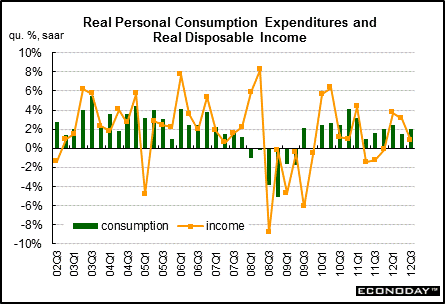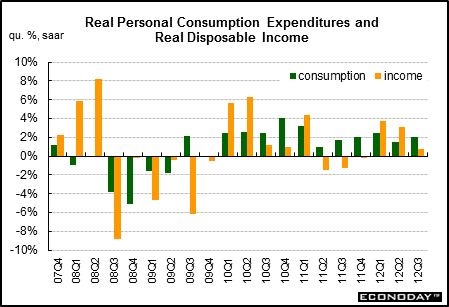
Typically, consumers increase spending in direct proportion to gains in disposable income. However, spending can also be boosted by “wealth effects” such as during the 1990s during periods of strong stock market gains or during the mid-2000s when the housing boom caused a surge in home equity. Since 2006, a housing bust and since late 2007 a stock market correction have damped consumer spending. Conditions worsened in 2008 and into 2009 – notably in the labor markets – and pushed consumer spending into negative territory—until cash-for-clunkers boosted spending in the third quarter of 2009. Consumers with jobs have become somewhat more optimistic. Positive growth for spending continued into the third quarter of 2012.

Real personal consumption in the third quarter improved to a 2.0 percent annualized increase, following a 1.5 percent rise in the prior quarter. The latest gain was led by an 8.5 percent annualized jump in the durables component—largely reflecting motor vehicle sales. Nondurables rose 2.4 percent while services gained a modest 0.8 percent.



Production & Sales •
Inflation •
Federal Reserve Policy •
Interest Rates
|

